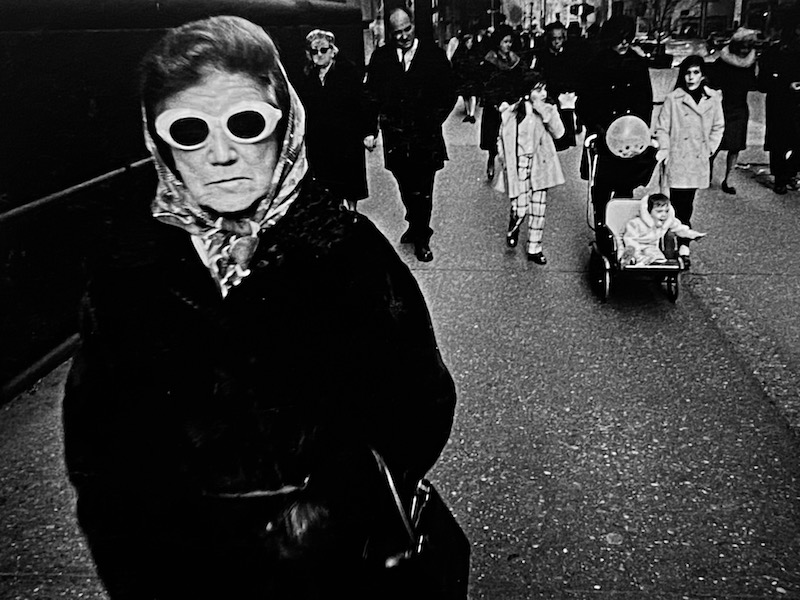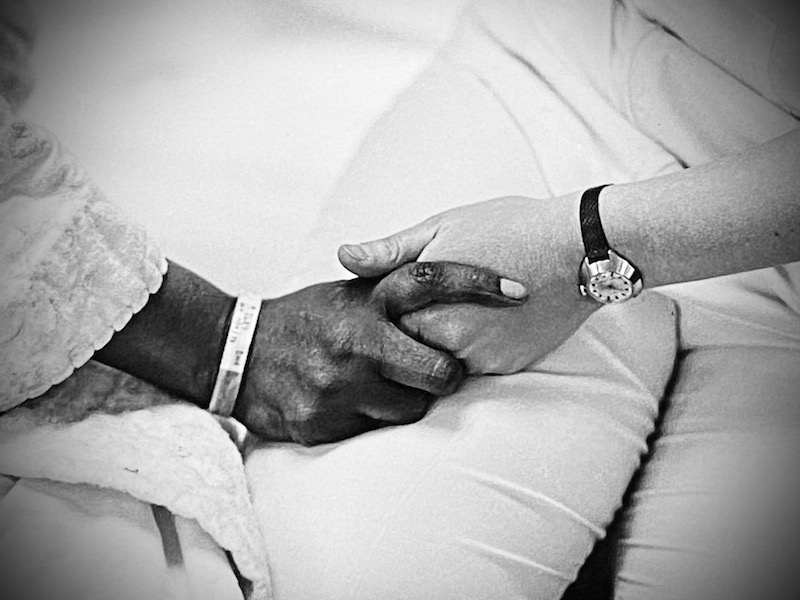 [Per several previous posts, I’m dipping into the archives this year to celebrate the 50th anniversary of my departure from the Arts & Leisure Section of the New York Times as a regular columnist in those pages.
[Per several previous posts, I’m dipping into the archives this year to celebrate the 50th anniversary of my departure from the Arts & Leisure Section of the New York Times as a regular columnist in those pages.
The medium’s rich field of ideas was very much in flux. By 1974 I’d begun regularly to address projects by photographers that went beyond the previous normal exhibition and monograph formats of greatest hits/latest favorites. While some photographers continued to emphasize individual, self-contained, and presumably self-sufficient pictures, an increasing number now explored what I came to think of as extended form: sequences, suites, cycles, image-text combinations, and a variety of other methods for moving beyond the isolated single image.
Photographers thus challenged their viewers (including their critics) to approach and understand their work in unconventional ways. Criticism of photography, as a serious practice, had barely established a toehold in the contemporary cultural discourse. Writers on photography of the period had little in the way of a shared vocabulary. In effect, we had to make it up as we went along — a situation both daunting and exhilarating.
In the following article I grapple with one such project, Julio Mitchel’s “Two Wards,” presented at one of New York’s “alternative” spaces for photography. It juxtaposed two sets of images made in what we would then have considered a nominally “documentary” style, yet describing two very different human environments. It asked for a reading that engaged with the tensions and synergies between them.
 This piece first appeared in the New York Times as “From New York’s Streets to a Hospital’s Wards,” February 24, 1974. (You can find it in its original form here at the NYT archive.) Subsequently I reprinted it in my 1979 collection of essays, Light Readings. In 1986 I curated “Triptych,” a survey of Mitchel’s work, for the Photo Center Gallery, Tisch School of the Arts, New York University. And in 1990 I included a selection of Mitchel’s work in “Testimonies: Photography and Social Issues,” a group exhibition I curated for the biennial Houston Fotofest International.
This piece first appeared in the New York Times as “From New York’s Streets to a Hospital’s Wards,” February 24, 1974. (You can find it in its original form here at the NYT archive.) Subsequently I reprinted it in my 1979 collection of essays, Light Readings. In 1986 I curated “Triptych,” a survey of Mitchel’s work, for the Photo Center Gallery, Tisch School of the Arts, New York University. And in 1990 I included a selection of Mitchel’s work in “Testimonies: Photography and Social Issues,” a group exhibition I curated for the biennial Houston Fotofest International.
For a profile of Mitchel, see “‘South of the Border,’ Unsettling Views” by James Estrin, New York Times, November 23, 2010. You’ll find an extensive sampling of Mitchel’s imagery at his website.
My Times column that week included a short commentary on an exhibition of experimental eastern European photography from the early part of the century. Presentations of such work — indeed, shows of past and current work from outside the U.S. — remained relatively scarce in New York and elsewhere in this country at that time. I’ve included this brief review here to point that up. — A.D.C.]
•
From New York’s Streets to a Hospital’s Wards
At first, Julio Mitchel’s current exhibit at the Midtown Y Gallery, “Two Wards,” appears to consist of separate and unrelated essays. The first of these deals with crowds on New York City streets, while the second explores the texture of life at Goldwater Memorial Hospital, which specializes in chronic diseases.
The street series is the more peculiar of the two, its oddness emanating from a disjunction between form and function. Insofar as its style and format are concerned, this set of three dozen images locates itself within the territory generally referred to as “documentary” photography. That is, on the surface its intent seems to be the presentation of significant new information about a situation external to the photographer.
On that level, however, it rapidly becomes clear that this body of imagery is a self-fulfilling prophecy. Mitchel made these images by standing facing the flow of pedestrian traffic on Fifth Avenue during rush hour. It could not have come as a surprise to him — and should not come as such to us — that the result of confronting a crowd of strangers with a camera in a business district would be imagery reflecting wariness, hostility and alienation on the part of those photographed.
•
The use of a wide-angle lens under such circumstances adds an element of grotesque distortion and amplifies the sensation of people streaming past the camera like cattle. And the harsh sharpness of the prints, which are not sensually pleasant to look at, intensifies this edginess even further.
But these results are so predictable — and, in terms of “documentary” photography, such old news — that it is obvious their area of concern is not an external but an internal situation. Clearly, they reflect a deep depression on the part of the photographer; he stands among his fellows as anomalous as a blind or legless beggar, and is passed by without notice, without contact, without touch, granted no more identity than the dismembered mannikins in the windows of the shops. It is on this level of the personal and emotional function of the imagery that relationships between Mitchel’s two series crystallize.
For the essay ostensibly about hospital life in fact a statement about touch. To be sure, there are other elements in the microcosm Mitchel describes — loneliness, physical pain, helplessness, and the omnipresence of death — but touch is the central metaphor, recurring in one image after another. Patients touch each other, reach for and are held by doctors and nurses, relate physically to animals and to themselves. It is as though (shades of Thomas Mann’s The Magic Mountain) sickness were a necessary prerequisite of health.
•
The physical vulnerability which placed the patients there, Mitchel seems to suggest, generates or gives permission for an emotional vulnerability as well. The contrast between the world outside the hospital, where the physically well cannot find relief from emotional pain, and the world inside the second of Mitchel’s “Two Wards,” is the photographer’s major point. It emerges from neither of these two essays separately; it is created by their combination.
And it is surely more than coincidental that in both “wards” Mitchel’s position is that of an outsider. The dominant irony is that the photographer’s physical health places him beyond the hospital’s parameters of solace, while his psychic pain — manifested in his futile search for communication on Fifth Avenue — makes him an untouchable outside its doors. Whatever autobiographical conclusions one might draw from this evidence, “Two Wards” does demonstrate the need for a more precise term than “documentary” to denote such intensely subjective responses to personal experience as this one.
•
AT MOMA
Compact as it is, the new exhibit in the Museum of Modern Art’s Steichen Galleries seems remarkably diversified in its ramifications.
Curated by Dennis Longwell, the show brings together 40 images made during the 1920s and ’30s by Andre Kertesz, Laszlo Moholy-Nagy, and Alexander Rodchenko, all of whom were born within a few years of each other in the Central Europe of the 1890s.
The exhibit offers a chance to view some rare original prints — the scarcest being those of Rodchenko, a Russian Constructivist whose work is not so readily accessible as that of Kertesz and Moholy, even in reproduction form. The three contrast most distinctly. Kertesz, a romantic, is ever full of feeling, capable of turning even a pair of puppets into an erotic event (“Marionettes de Pilsener, 1929”).
Moholy is consistently remote emotionally, even when dealing with human beings, yet witty, intellectually dynamic and visually acute. Rodchenko falls approximately between the two: formalistically concerned yet capable of passionate, powerful portraiture (the studies of his wife, Varvara Stepanova, and the poet Mayakovsky) and the dream-like delicacy of the hand-colored negative print, “Rumba.”
Primarily, though, what the exhibit presents is a look at things from above. Most of these images were made by pointing the camera down from a considerable height. Today that seems an almost banal commonplace, but at the time it was a perceptual and imagistic breakthrough with few precedents in painting and the other graphic arts. Within a few years, it became so widely used a vantage point in still and motion pictures that it permanently altered our way of seeing. In a quiet way, then, this exhibit chronicles a crucial visual revolution which legitimatized a new way of perceiving the world.
•

Special offer: If you want me to either continue pursuing a particular subject or give you a break and (for one post) write on a topic — my choice — other than the current main story, make a donation of $50 via the PayPal widget below, indicating your preference in a note accompanying your donation. I’ll credit you as that new post’s sponsor, and link to a website of your choosing.
And, as a bonus, I’ll send you a signed copy of my new book, poetic license / poetic justice — published under my full name, Allan Douglass Coleman, which I use for my creative writing.








Leave a Comment